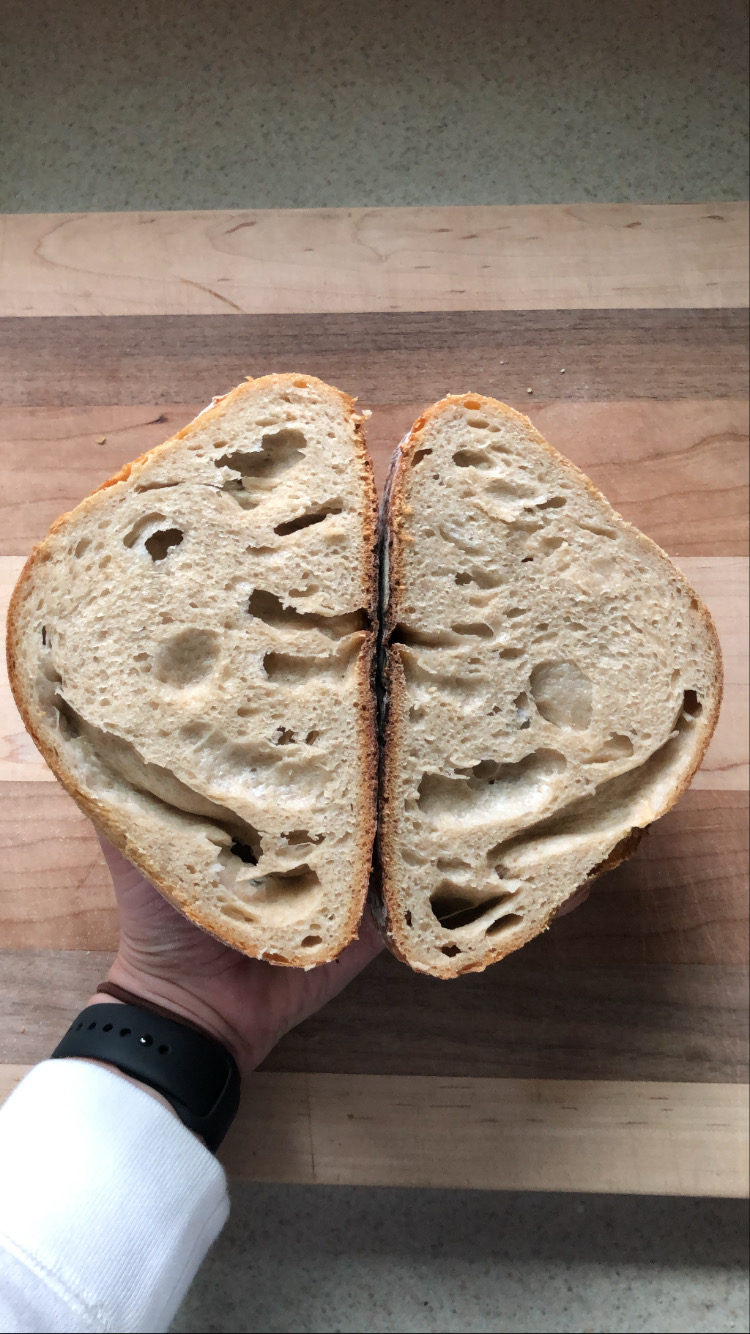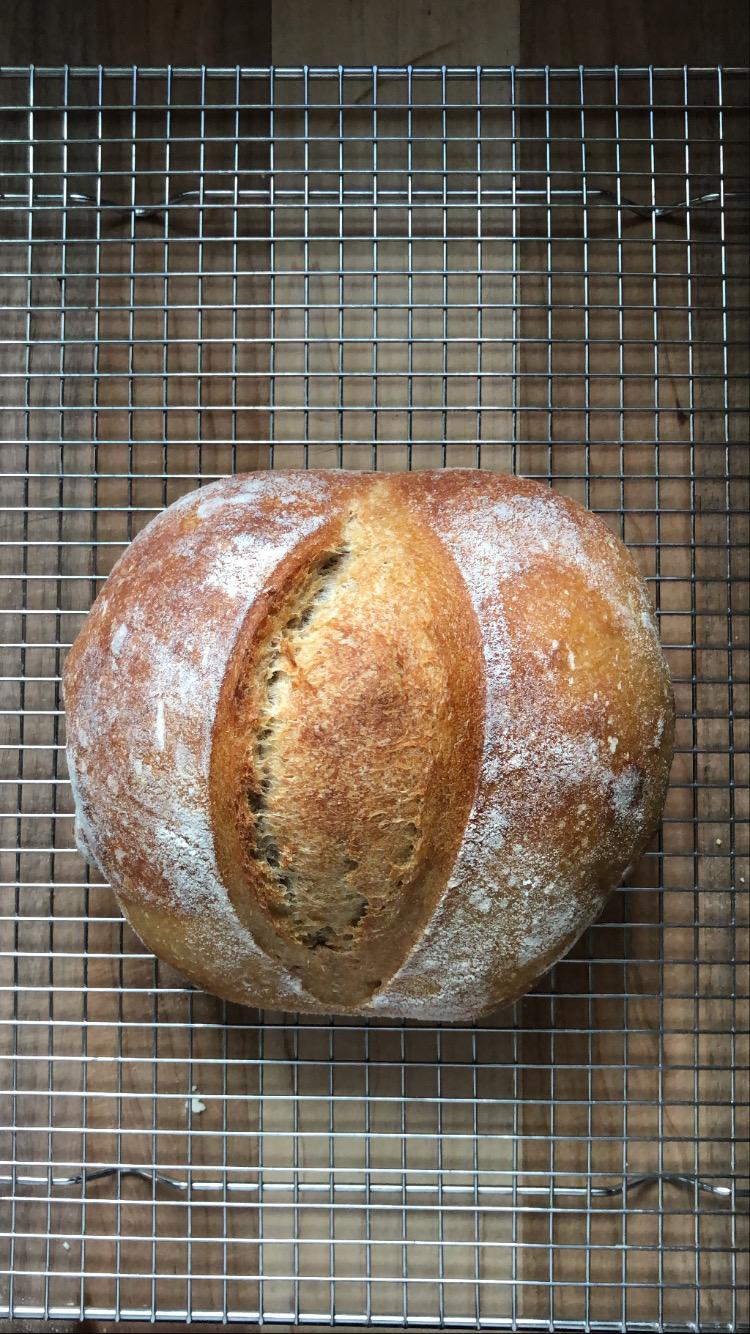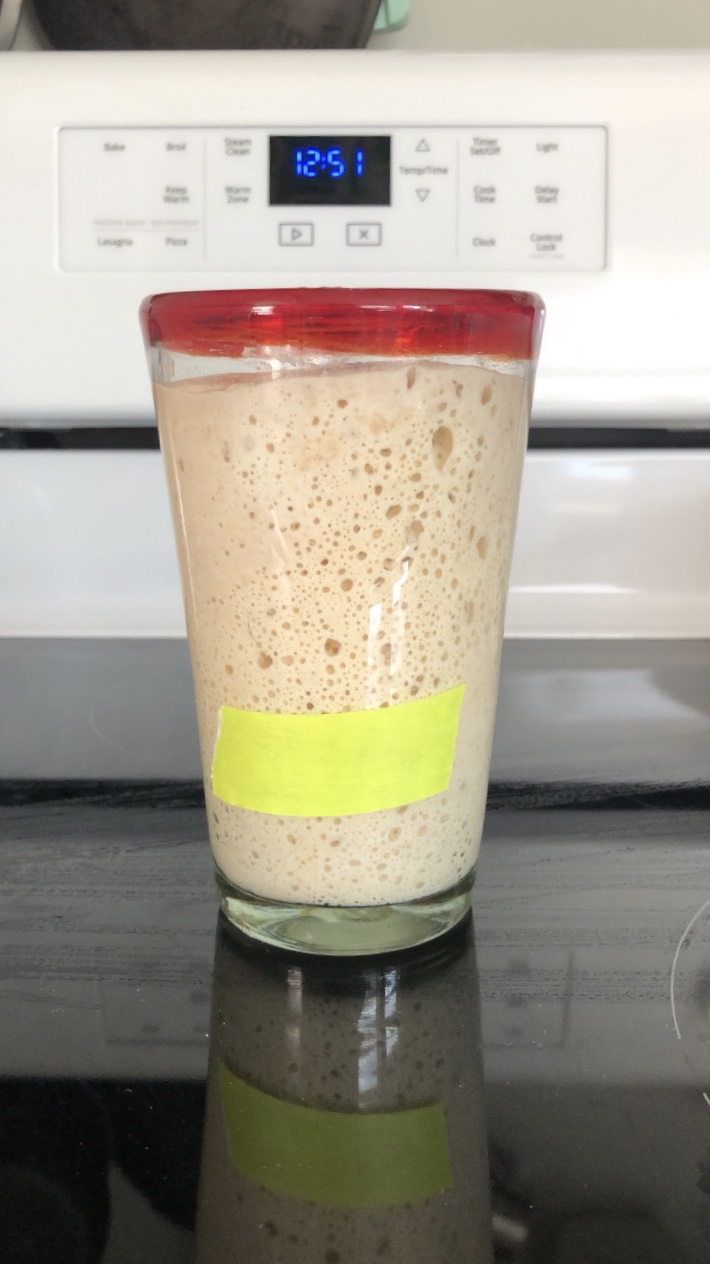
Best bagel recipe
Do people have a go-to bagel recipe that can be accessed? I'd love to start making them and want to know I'm using a solid recipe.

Do people have a go-to bagel recipe that can be accessed? I'd love to start making them and want to know I'm using a solid recipe.

Hi all
I've been baking sourdough for a few years now and have a consistent starter that works well with every loaf of plain white soudrough. I have also made many great fruit loafs but recently I have had issues with the rise. I'll use the starter one day to make excellent white loafs, then the next day put on my fruit loaf and get nothing. Last week I got an OK rise, but today again, nothing. I've done acid dumps and make sure the culture is nice and active so I'm fairly convinced there must be something else going on. Perhaps one of my ingredients is killing the culture?
My first step is to make the starter. I take 30g active 100% hydration starter and add 200g baker's flour and water. This sits for 10-12 hours until it's doubled and bubbling.
My ingredients for the loaf are:
Starter above (430g)
800g white baker's flour
320g all up of sultanas, dates and dried apricots, chopped and soaked in black tea
60g coconut sugar
15g cinnamon
2g nutmeg
10g salt
10g olive oil
480g total liquid (around 180g tea from the fruit soak and 300g water)
Half macadamias or whole almonds covering the base of the bread tins
My method is basically:
-Drain the tea off the soaking fruits and use this liquid plus the water.
-Everything except the fruit is mixed in a stand mixer with bread hook
-After about 5-6min it has the consistency of my usual sourdough. Turn it onto a floured bench and stretch into a rectangle
-Spread the fruit evenly then fold thirds over itself, stretch and repeat 3 times to distribute the fruit
-Cut in half and put into 2 bread tins to rise.
Usually within 8 hours (at room temp of 20c or 68f) they'd be risen nicely but again this morning they've not risen even a bit.
Any suggestions? Maybe my fruit has sulfites that are killing it? Cinnamon? Nutmeg?
Thanks in advance

I'm a new sourdough baker and not sure where I went wrong with my first loaf. I followed this recipe to a tee: https://www.theperfectloaf.com/beginners-sourdough-bread/
Here's my sad, dense crumb:

The outside looked better than the inside:

I'm wondering if it had something to do with the fermentation? Because the starter seemed really active. This was after 4.5 hours:

Any advice on how I should proceed in the future would be greatly appreciated. Maybe I should try a more hydrated dough? This recipe was 72%, which was recommended for a beginner.


Very hot here. High temp around 110 F, so, to keep the kitchen cooler and reduce electricity use, i cooked a bread on our weber grill. I put a clay baker on to preheat for 15 min before loading the dough and cooking covered for 20 mins and then uncovered for another 20. The grill cover was on for all of it, besides to remove the clay baker cover.
With some iteration, it could work. The bread was good, with a mild smoke flavor. It was slightly undercooked ( though that could be from cutting while hot). The bottom was very charred and had to be scraped off.
It’s my ‘staple bread’ - bolted fresh ground winter wheat.
crumb:


This bread was inspired by Derek's post from last week here.
He recently made a few awesome loaves using raw onions in the dough. I usually saute or caramelize my onions before adding them to the dough and a lot of time they end up getting absorbed into the dough. By putting them in raw, they definitely kept their shape much better and also added a wonderful onion flavor to the bread. I used some freshly made Greek yogurt that my wife recently made which really helped create a nice moist crumb.
This one came out excellent and made excellent pastrami with melted cheese sandwiches! The crumb was nice and moist and flavorful.
Here are the Zip files for the above BreadStorm files.
Levain Directions
Mix all the levain ingredients together for about 1 minute and cover with plastic wrap. Let it sit at room temperature for around 7-8 hours or until the starter has doubled. I used my proofer set at 83 degrees and it took about 4 hours. You can use it immediately in the final dough or let it sit in your refrigerator overnight.
Main Dough Procedure
Mix the flours with 90% of the water and the yogurt for about 1 minute. Let the rough dough sit for about 20 minutes to an hour. Next add the levain, salt and the balance of the water and mix on low for 4 minutes. (Note: if dough is too wet you don't need to add all of the water). Next, add the chopped raw onions and mix by machine or hand for about 15 seconds until they are incorporated into the dough.
Remove the dough from your bowl and place it in a lightly oiled bowl or work surface and do several stretch and folds. Let it rest covered for 10-15 minutes and then do another stretch and fold. Let it rest another 10-15 minutes and do one additional stretch and fold. After a total of 2 hours place your covered bowl in the refrigerator and let it rest for 12 to 24 hours. (Since I used my proofer I only let the dough sit out for 1.5 hours before refrigerating).
When you are ready to bake remove the bowl from the refrigerator and let it set out at room temperature still covered for 1.5 to 2 hours. Remove the dough and shape as desired.
The dough will take 1.5 to 2 hours depending on your room temperature and will only rise about 1/3 it's size at most. Let the dough dictate when it is read to bake not the clock.
Around 45 minutes before ready to bake, pre-heat your oven to 540 degrees F. and prepare it for steam. I have a heavy-duty baking pan on the bottom rack of my oven with 1 baking stone on above the pan and one on the top shelf. I pour 1 cup of boiling water in the pan right after I place the dough in the oven.
Right before you are ready to put them in the oven, score as desired and then add 1 cup of boiling water to your steam pan or follow your own steam procedure.
Lower the temperature to 450 degrees. Bake for 25-35 minutes until the crust is nice and brown and the internal temperature of the bread is 205 degrees.
Take the bread out of the oven when done and let it cool on a bakers rack before for at least 2 hours before eating.

Next week's Fermentology lecture features Francisco Migoya of Modernist Bread fame. Myth buster or inadequately researched proclamations? Have a listen and decide for yourself!
Lance


just got a set of these bbq steam boxes. They’re Heavy seasoned cast iron. little smaller than I expected but that might be a good thing.
Not sure what the best orientation would be. But I guess that depends on what I’m baking.

I was told to put a small amount of dough in a small, straight sided jar alongside the rest of my dough while it bulk ferments. Once the dough in the small jar has double, bulk ferment is done. Does that sound right to you? I've done it once so far and got a pretty nice bread but thought maybe it was a tad overproofed.

Hii... i am a newbie in pastamadre, can anyone help me.!
What should i do with the exhausted pasta madre?
Thanks

Hi TFL's Bakers,
I am a bit confused after comparing the specs of the Famag IM-10S and the Doyon EM20, they are both 110/120V.
I am aware the Famag is a spiral mixer, and the Doyon is a planetary mixer. However, they could potentially perform the same job mixing dough for artisan bread between 50% and 80% hydration.
While the horsepower ratings and the bowl capacities of these two mixers are vastly different they both seem to be able to hold a similar amount of total dough weight at 60% AR.
I am in the market for a new mixer for bread doughs. Perhaps there is someone in these forums that can explain to me how can these two mixers handle about the same dough weight with such different bowl capacities and horsepower, please?
Thanks!